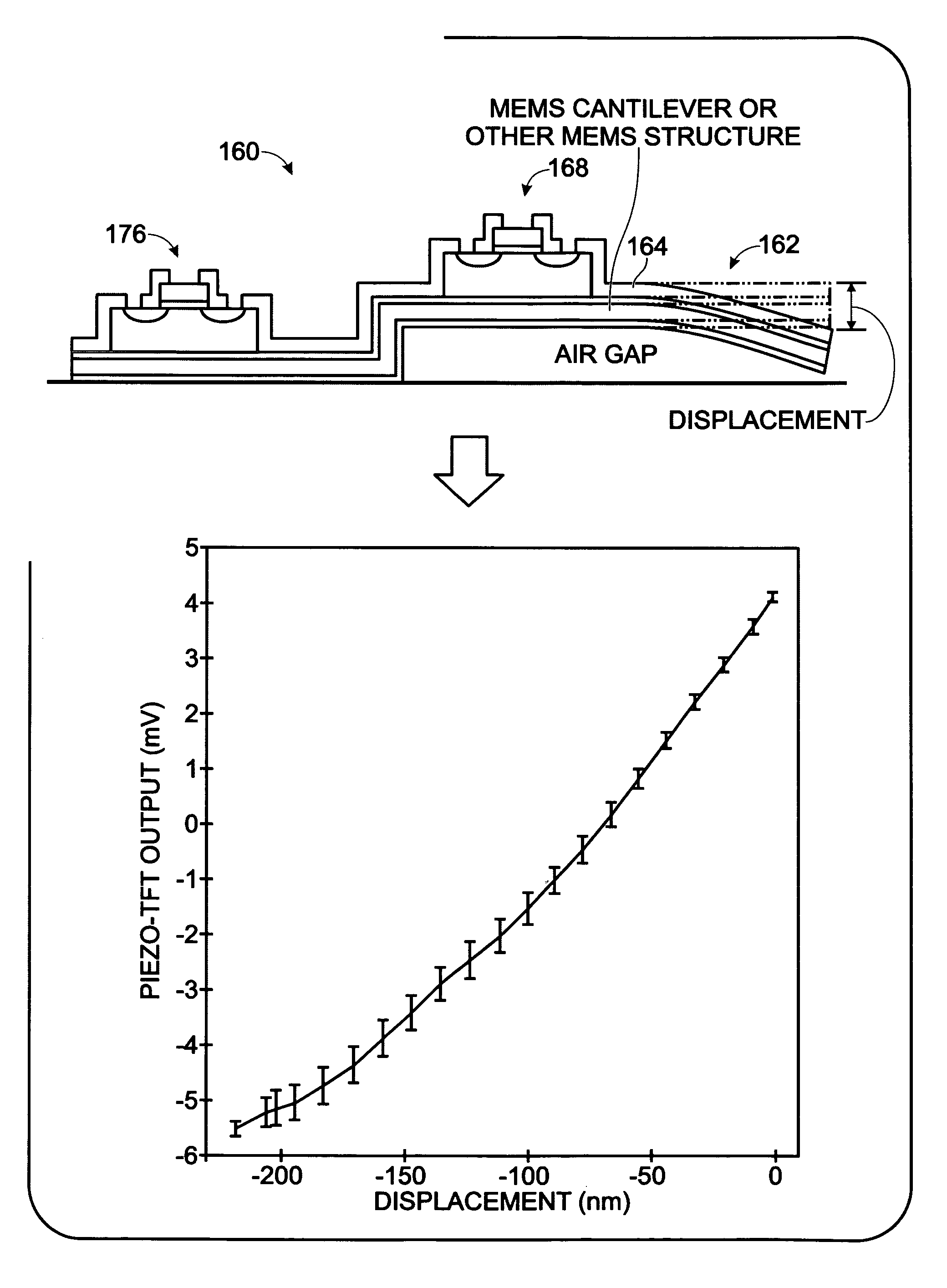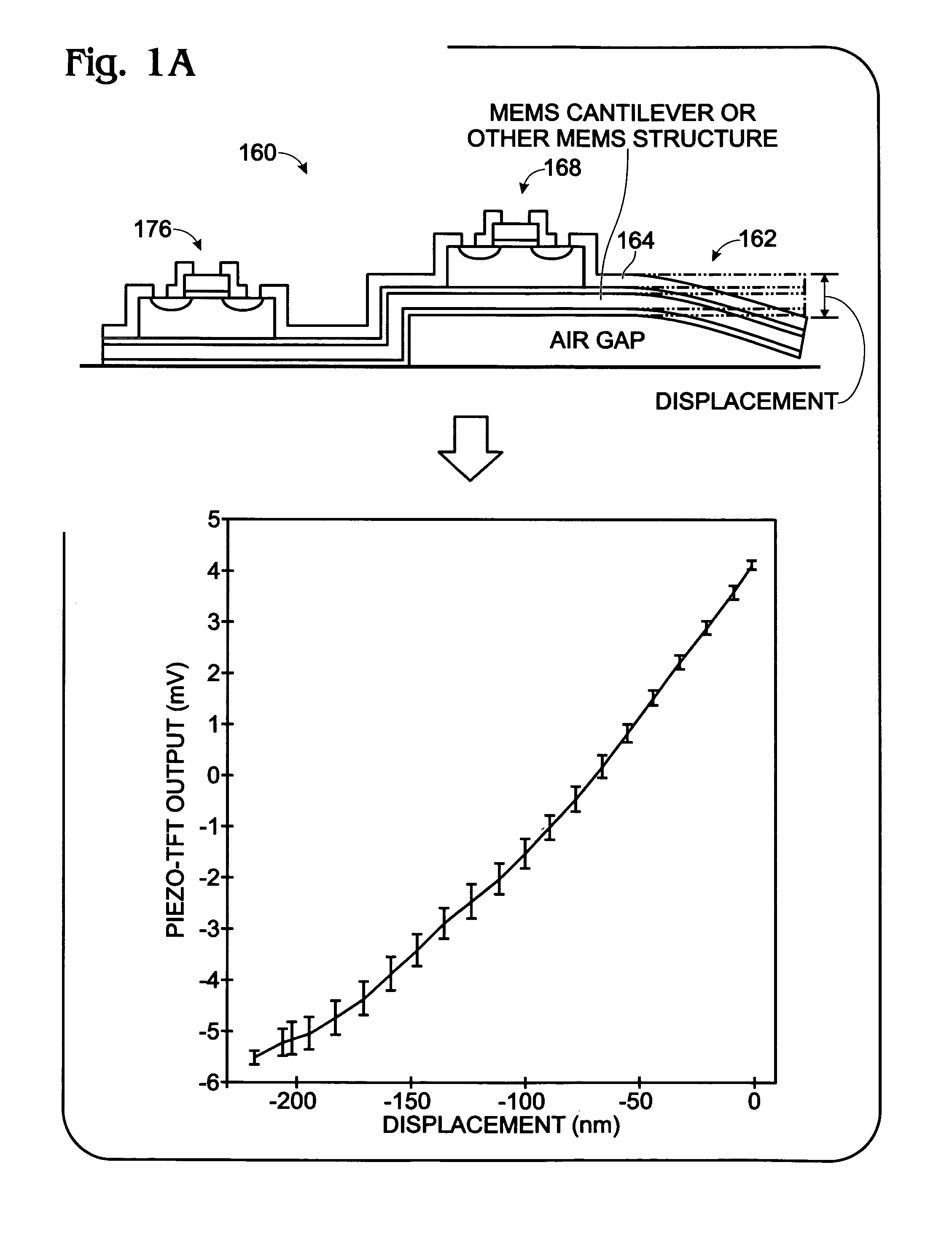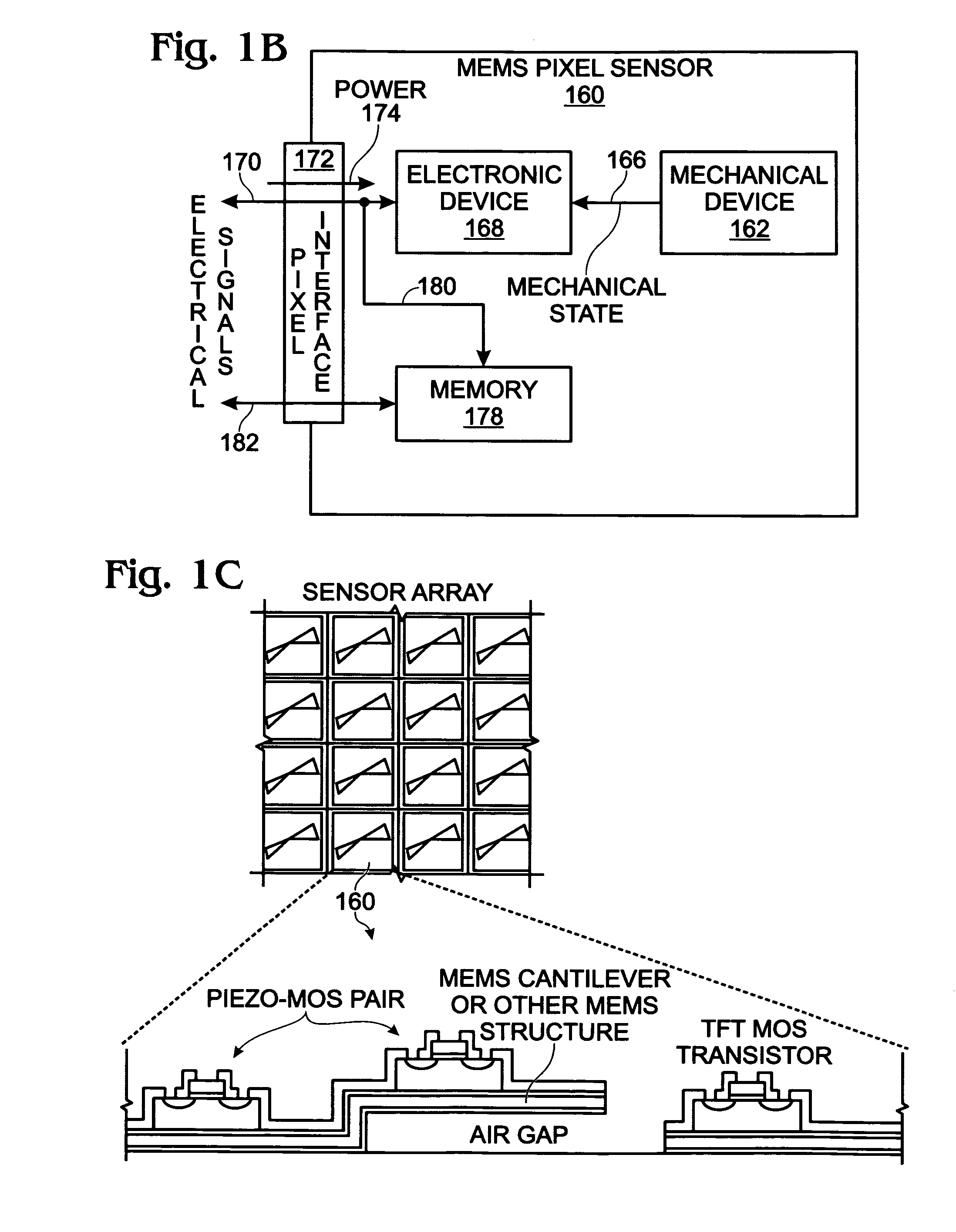MEMS pixel sensor
a micro-electromechanical and sensor array technology, applied in the direction of force measurement using piezo-resistive materials, acceleration measurement using interia forces, instruments, etc., can solve the problems of large impact, noise inherent in the electrical connection between the mems package and the rest of the system, and large proportion of the total cost of the mems devi
- Summary
- Abstract
- Description
- Claims
- Application Information
AI Technical Summary
Benefits of technology
Problems solved by technology
Method used
Image
Examples
Embodiment Construction
[0071]FIGS. 1A through 1H depict various aspects of a MEMS pixel sensor and associated array. The present invention MEMS pixel sensor provides a fabrication process, device design, and an integrated sensor array system that displays improvements in the area of cost, speed, compactness, and accuracy with respect to conventional technology. In the following discussion a piezo-TFT cantilever is often presented as an example of a MEMS pixel sensor. In other aspects, the MEMS pixel sensor is described more concisely as a transducer, MEMS, MEMS sensor, pixel, process pixel, or MEMS pixel.
[0072]FIG. 1A is a cross-sectional view of a MEMS pixel sensor (MPS). FIG. 1B is schematic block diagram view of the MEMS pixel sensor of FIG. 1A. FIGS. 1C and 1D show the MPS of FIG. 1A as part of a sensor array.
[0073]1) Fabrication process: Low temp poly processing including laser anneal enables the monolithic fabrication of a single transducer that includes both electrical and mechanical elements that ...
PUM
| Property | Measurement | Unit |
|---|---|---|
| thick | aaaaa | aaaaa |
| thick | aaaaa | aaaaa |
| output voltages | aaaaa | aaaaa |
Abstract
Description
Claims
Application Information
 Login to View More
Login to View More - R&D
- Intellectual Property
- Life Sciences
- Materials
- Tech Scout
- Unparalleled Data Quality
- Higher Quality Content
- 60% Fewer Hallucinations
Browse by: Latest US Patents, China's latest patents, Technical Efficacy Thesaurus, Application Domain, Technology Topic, Popular Technical Reports.
© 2025 PatSnap. All rights reserved.Legal|Privacy policy|Modern Slavery Act Transparency Statement|Sitemap|About US| Contact US: help@patsnap.com



